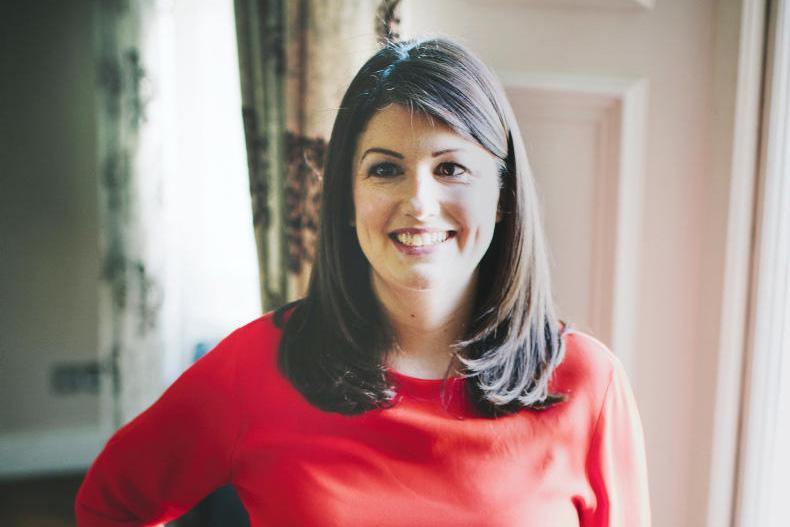Louise McCabe wishes she had known more about personality preferences when she started out in the working world. “It would have saved me a lot of heartbreak,” she says.
Louise studied for MSc in Management in Organisation Behaviour and she paired this with her experience as a business coach in founding Inside Edge in 2013.
Inside Edge works with organisations to help its employees understand the psychology of how people and groups operate to help improve business.
One of the topics Louise will be covering in the Career Advice Hub at the Agri Careers Fair is personality preferences in the workplace.
“In college, students typically have a lot of autonomy and control over things like attending and participating in lectures, juggling deadlines for assignments and revising,” she explains.
A student will learn what best suits them to get a certain grade and continue to work in this fashion. In the workplace, problems begin to arise when people who have different preferences come together. When it comes to deadlines, the friction can be seen.
FROM A TO B
Louise gives the example of person A, who likes to do tasks well ahead of time, and person B, who gets more energy when they leave their task closer to the deadline.“Their results are similar but how they go about it is completely different,” Louise explains.
She poses the question: “What if person A is the boss of person B?” Louise notes that in the workplace a lot of time, the boss isn’t necessarily interested in the task but wants to see their employee working in a particular way and making deadlines.
These expectations are not always verbally communicated and sometimes tensions arise.
According to Louise, each person is born with a set of preferences that shape where they focus their energy, the kind of information they gather and trust, the process they prefer to use to make decisions and how they like to deal with the world around them.
“As we interact with others – in our family, in school, education, in social settings and at work – we come across people who might have different preferences to us,” Louise says. “So we learn how to adapt or flex our preferences to connect and work with others.
WHO’S RIGHT?
“We may think that our preference is ‘right’ and others are ‘wrong’. We may even judge people who have different preferences as less capable or less skilled,” she says.
Understanding is key here, and Louise says her job is to make people aware of the role personality preferences play in work situations. This can help them see a situation through a different lens, and react in a different way.
Louise cautions that not everything that happens can be put down to preferences, however, and that other factors come into play.
The way an employee reacts to a situation when a company is doing well will be entirely different to the way they react to the same situation when a company is announcing job losses.
Nevertheless, it is a positive tool that can be used to get the most out of an employee, understand a boss or process the dynamics of a group.
MBTI TRAINING
“If individuals or teams want to delve deeper into this area, we run a facilitated session using a tool called the Myres Briggs Type Indicator (MBTI),” Louise says. The MBTI is a questionnaire that measures personality type.
According to Louise, some people may love talking to people and working in groups; this comes easily for them and gives them energy. Other people are more productive when they work alone.
When the person whose preference it is to work alone is in a job where they are talking to people all day, they exert more energy and by the end of their working day will be far more tired than the person who it comes naturally to, says Louise.
The MBTI takes four elements that make up the foundation of a personality and tests these to see which of the 16 personality types a person fits into.
SOLID RELATIONSHIPS
According to Louise, knowing these personality types and being aware that people have different preferences can diffuse a lot of stressful situations and create solid working relationships.
“It is about doing things in awareness of yourself and others. The right time to use this as a tool is through open dialogue. It provides information to have an open and honest conversation with the team you are working in or your employers,” Louise says.
“Organisations work well when people are consulted, considered and involved. A lot of it is common sense. If a person who is energised by working right up to a deadline is then loaded with lots of work at the last minute, that isn’t right either. There needs to be consideration and respect in the workplace,” Louise says.
This tool isn’t going to solve all the problems you might meet at work, but it does have its uses.
Louise says it is useful when leaders are recruiting staff. Managers are likely to recruit mirror images of themselves, which can lead to lack of diversity within an organisation.
If they understand other people and that they have different preferences, it gives and employer more insight to make a better decision.







 This is a subscriber-only article
This is a subscriber-only article





SHARING OPTIONS: